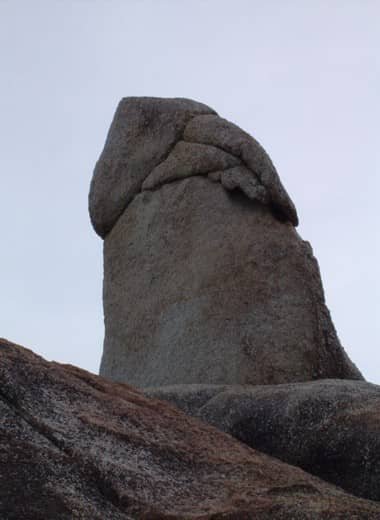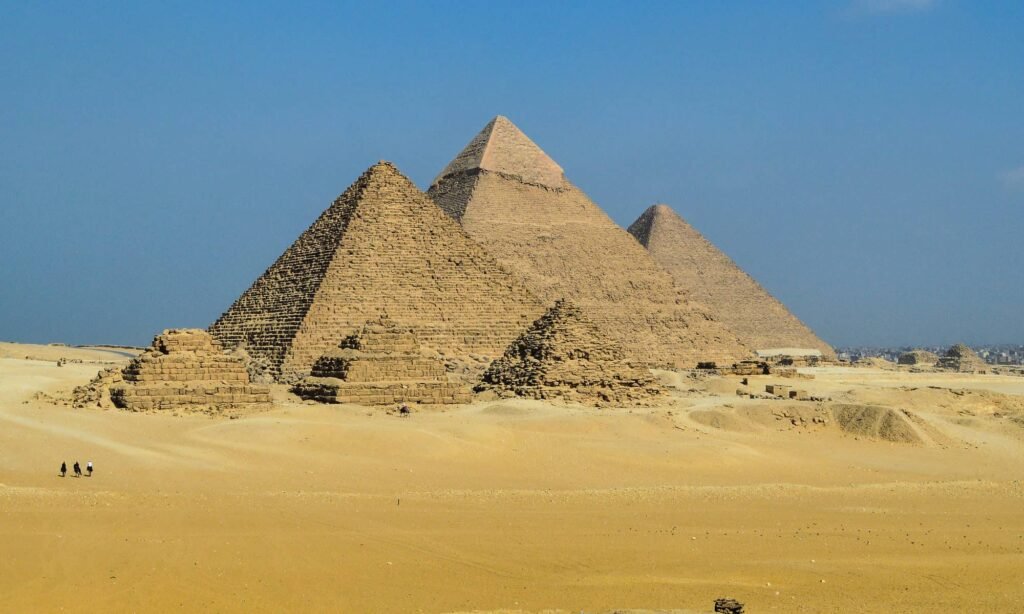Monoliths are large single blocks of stone, like those at Stonehenge, while megaliths consist of several large stones arranged in patterns, such as dolmens or stone circles. Both have fascinated historians and archaeologists for centuries, often associated with ancient ceremonial and burial sites.
Monoliths and megaliths date back to the Neolithic period, showcasing architectural ingenuity and holding profound religious significance. They served as symbols of authority, memorials, or ritual sites, offering insight into the social and spiritual life of early civilizations.
Monolithic Cultures
A monolithic culture refers to a social system that exhibits a relatively uniform set of values, practices, and beliefs. In such cultures, the population often shares a common historical background, language, and customs, resulting in a cohesive identity. This homogeneity can create a strong sense of belonging among members but may also limit diversity and suppress differing viewpoints.
One key characteristic of monolithic cultures is their emphasis on tradition and continuity. Many of these societies prioritize maintaining historical practices and rituals, embodying a respect for their cultural heritage. Additionally, the social structure in monolithic cultures is often hierarchically organized, with clear roles and functions assigned to individuals based on age, gender, and status.
While monolithic cultures can foster a strong communal identity, they may also encounter challenges, particularly in an increasingly globalized world. The lack of diversity in perspectives can lead to intolerance towards outsiders and difficulty adapting to change. However, there are also advantages; such cultures can provide individuals with a sense of stability and shared purpose. Understanding the complexities of monolithic cultures is crucial as societies navigate the balance between preserving tradition and embracing inclusivity.
Megalithic Cultures
Megalithic cultures refer to ancient societies that constructed large stone structures for various purposes, including burial sites, ceremonial spaces, and astronomical observations. These remarkable achievements often reflect the advanced understanding of architecture and astronomy that these cultures possessed.
Megalithic structures are typically characterized by the use of massive stones, arranged in intricate patterns. Common types include menhirs (standing stones), dolmens (tombs), and stone circles, often found in places like Stonehenge in England, or Newgrange in Ireland. These structures were not only architectural marvels but also served as communal gathering places, demonstrating the social dynamics of the cultures that created them.
The cultural significance of megalithic sites cannot be overstated. They often symbolize a connection to the ancestors and carry deep spiritual meanings. These sites have been linked to rituals, ceremonies, and a profound respect for the cycles of nature, showcasing the interrelationship between humanity and the environment. As we explore these ancient cultures, we gain insights into their values, traditions, and innovations.
These colossal structures, often made from local stone materials like granite, sandstone, or limestone, showcase the engineering skills of ancient peoples. Many megalithic sites align with astronomical events, indicating significant knowledge of celestial movements. This connection highlights their relevance to sociocultural practices and a broader understanding of the cosmos in human history.
Famous Monoliths Around the World
The world is home to various monoliths (List of largest Monoliths), each with unique attributes that contribute to their historical and cultural significance.
- Natural Origins
- One of the most renowned is Uluru, traditionally known as Ayers Rock, located in the heart of Australia’s Northern Territory. Standing approximately 348 meters tall and with a circumference of 9.4 kilometers, Uluru is known for its incredible color changes, particularly during sunrise and sunset. This sandstone monolith holds immense spiritual significance for the Indigenous Anangu people, who regard it as a sacred site. The surrounding Uluru-Kata Tjuta National Park is a UNESCO World Heritage site, attracting numerous tourists who come to witness its grandeur and engage with the local culture.
- Another notable monolith is the Tsingy de Bemaraha in Madagascar. This unique limestone formation consists of sharp pinnacles and labyrinthine gaps, making it a striking geological feature. The site spans approximately 666 square kilometers and is renowned for its biodiversity, hosting numerous endemic species. Designated as a UNESCO World Heritage site, Tsingy de Bemaraha draws visitors interested in adventure and unique ecosystems. The traditional Betioky people deeply revere this natural fortress for its role in local legends and its resources.
- Human-Made
- Easter Island, or Rapa Nui, is renowned for its Moai statues, some weighing over 14 tons. These monoliths, representing ancestors and deities, highlight the islanders’ cultural heritage. Positioned on stone platforms called Ahu, the statues face inland, symbolizing protection and ancestral connection. The transportation of these statues from the quarry at Rano Raraku remains a mystery, with theories suggesting they were moved upright using ropes and teamwork. The Moai continue to captivate visitors and historians, reflecting the island’s rich history and enduring legacy.
- In late November 2020, the Utah Monolith was discovered in Utah’s remote desert, sparking global intrigue. Resembling the monolith from “2001: A Space Odyssey,” it stood 10-12 feet high. Social media buzzed with theories about its origins – art installation, marketing stunt, or something else. Crowds flocked to see it, raising questions about art in untouched landscapes. Shortly after, the monolith disappeared, fueling further speculation. Despite its brief existence, it united people in wonder and curiosity, highlighting the allure of the unknown.
Megalithic Structures and Their Mysteries
Megalithic structures have long fascinated historians, archaeologists, and curious minds alike, serving as a testament to the architectural ingenuity of ancient civilizations. Among the most notable examples are Stonehenge in England, the Great Pyramids of Giza in Egypt, and the Carnac Stones in France. Each of these monumental sites carries with it a wealth of mystery, intriguing researchers about their construction methods and original purposes.
- Stonehenge, with its iconic sarsen stones and bluestones, presents numerous theories regarding its purpose. Some scholars suggest it functioned as a ceremonial site, aligning with celestial events such as the summer and winter solstices. Furthermore, ongoing archaeological studies have uncovered human remains and artifacts in the vicinity, hinting at its use as a burial ground. The collective effort and organization required to transport these massive stones from distant quarries reflect the advanced engineering skills possessed by the ancient societies.
- The Great Pyramids of Giza, particularly the Pyramid of Khufu, are another remarkable example of megalithic architecture. Constructed over approximately 20 years, the pyramids remain a feat of engineering prowess, demonstrating an understanding of mathematics and labor organization that was ahead of its time. Various theories suggest they served as tombs and represented a tangible connection to the divine, showcasing the society’s religious beliefs and the pharaoh’s authority.
- Similarly, the Carnac Stones, comprising over 3,000 standing stones, raise questions about ancient rituals and social organization. This site has prompted numerous theories about its function, including astronomical alignment and ritualistic gatherings. The sheer volume of stones, along with their alignment, points to a coordinated effort that likely required significant communal cooperation and expertise in logistics and engineering.
- Baalbek, in modern-day Lebanon, is renowned for its Roman temples and mysterious megaliths, known as the Trilithon, which weigh up to 800 tons. These ancient Baalbek Stone Blocks raise questions about the builders’ techniques. Theories range from advanced engineering to extraterrestrial influence. The megaliths, dating back to the Roman period or earlier, highlight Baalbek’s historical significance as a sacred site. Visitors can explore these colossal structures and imagine ancient rituals, reflecting the architectural prowess and enduring human spirit of the time.
In conclusion, the study of megalithic structures not only underscores the engineering capabilities of ancient civilizations but also invites contemplation of their cultural practices and societal structures. The mysteries surrounding these sites add layers of intrigue, inviting continual exploration and debate among researchers and enthusiasts alike.
The Legacy in Modern Culture
The fascination with monoliths and megaliths continues to permeate various aspects of contemporary culture, manifesting in art, literature, and popular media. These ancient structures, imbued with mystery and grandeur, have inspired countless works that draw on their historical significance and symbolic power. In literature, authors often evoke monoliths as metaphors for the unknown, representing both humanity’s aspirations and its limitations. Meanwhile, visual artists frequently incorporate megalithic imagery into their work, using it to explore themes of permanence and transience.
Additionally, modern architecture has been influenced by the monumental forms of ancient monoliths. Architects today often draw inspiration from the simplicity and strength of these structures, incorporating similar elements into contemporary designs. This homage to the past not only fosters a connection between ancient and modern societies but also invites discussions about the role of heritage in today’s architectural practice. The dialogue around preservation recognizes these giants of architecture as not merely relics of antiquity but as vital elements of our cultural identity.
Tourism associated with megaliths raises significant concerns regarding preservation strategies and sustainable practices. Many historical sites face threats from environmental degradation and the impacts of mass tourism. Balancing the desire to experience these awe-inspiring landmarks with the need for conservation is a contemporary challenge that must be addressed with care. Engaging local communities in conservation efforts and promoting responsible tourism can ensure these beloved structures continue to inspire future generations.
In exploring the symbolic meanings attributed to monoliths and megaliths today, they often represent resilience and continuity in a rapidly changing world. Their enduring presence invites reflections on cultural roots, reminding us of the profound connections that bind past and present. As society evolves, the legacy of these ancient giants remains significant, serving as a touchstone for discussions about identity, heritage, and human aspiration.
Meanwhile Once Upon A Time

Hin Ta Hin Yai is located in Hat Lamai, Tambon Maret on Koh Samui, Thailand. This natural phenomenon originates from the granite eroded by sea water and heat to form weird boulders. There is hearsay among the locals that a long time ago the grandparents, Ta Khreng and Yai Riam, natives of Nakhon Si Thammarat, travelled by sail boat to Prachuap Khiri Khan for proposing the marriage of their son to a daughter of Ta Monglai. Unfortunately, a strong storm sank their boat in Hat Lamai and the grandparents drowned. Their bodies were washed ashore and turned into the stones as seen nowadays.

What’s More
The posts in My Blog feature reflective, story-driven pieces rooted in personal and societal insights.
The topics in My Interests explore abstract, philosophical ideas and their cultural and societal impact.




